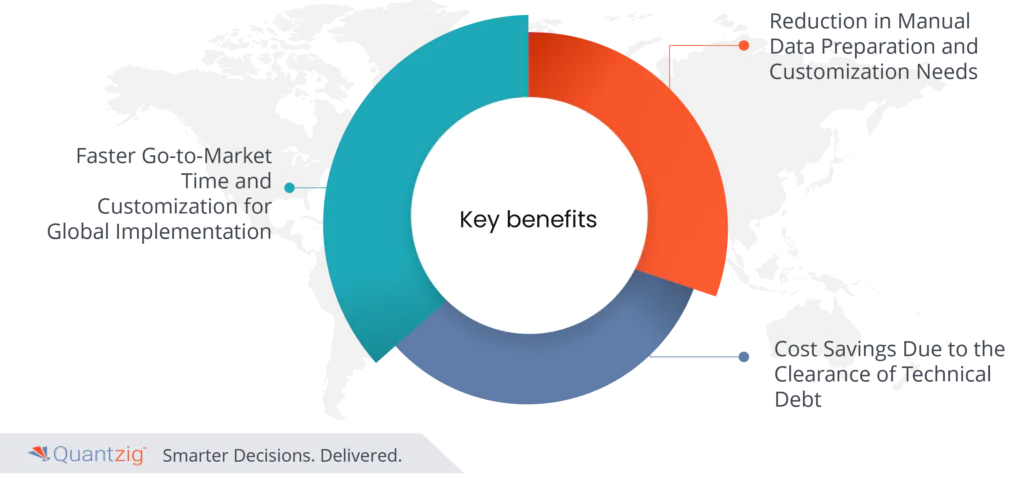Table of Contents
Introduction
In today’s rapidly evolving business landscape, the seamless operation of technology systems has become the lifeblood of organizations worldwide. As businesses increasingly rely on software applications to streamline their operations, the need for efficient and effective maintenance services has never been more critical. The Business Application Maintenance Services Model emerges as a cornerstone of modern business strategy, offering a proactive approach to ensuring the reliability, security, and optimal performance of mission-critical applications. In this article, we delve deep into this model, exploring its significance, components, and the transformative impact it holds for enterprises seeking to thrive in the digital age. Prepare to embark on a journey that unveils the power of proactive maintenance in sustaining business excellence.
Importance of Business Application Maintenance Services model:
- Business process automation (BPA) has emerged as a transformative force in today’s business landscape. It holds the potential to yield remarkable productivity improvements, with some studies suggesting gains of up to 60%. This substantial enhancement is primarily attributed to the elimination of manual, repetitive tasks through automation. By streamlining workflows, reducing errors, and enabling round-the-clock operations, BPA not only boosts efficiency but also frees up human resources for more strategic and creative endeavors. Furthermore, it enhances data accuracy and compliance, mitigating risks and enhancing decision-making.
- Rapid application development (RAD) plays a pivotal role in expediting the implementation of automation initiatives. RAD methodologies, characterized by iterative, collaborative development cycles, allow organizations to create and deploy automation solutions swiftly. This agility is invaluable in today’s fast-paced business environment, enabling companies to respond promptly to changing market dynamics and customer demands. By accelerating the development and deployment of automation tools, RAD not only reduces time-to-market but also facilitates ongoing adjustments and improvements, ensuring that businesses can harness the full potential of BPA to stay competitive and innovative.
Challenges/Problems faced while implementing the Business Application Maintenance Services model:
Selecting the appropriate maintenance model for your organization is pivotal, as it exerts a profound influence on your overall cost structure. The choice of maintenance model, whether it be corrective, preventive, predictive, or proactive, significantly impacts operational expenses, asset longevity, and system reliability. Moreover, the selection of the right maintenance tool is a critical precursor to cost reduction.
The high cost of off-the-shelf solutions often presents a challenge. These solutions may entail substantial upfront expenses, licensing fees, and ongoing maintenance costs, potentially straining your budget. In contrast, custom-tailored maintenance tools can be designed to align precisely with your organization’s unique needs, potentially reducing long-term expenses and optimizing resource allocation.
Furthermore, effective change management process knowledge is essential. Implementing a new maintenance model or tool necessitates a comprehensive understanding of your organization’s workflows and operational dynamics. This knowledge is crucial for seamless integration, user adoption, and realizing the full potential of your chosen maintenance approach. In summary, the right maintenance model, tool selection, and change management processes are interconnected facets that, when properly aligned, can lead to significant cost reduction and operational efficiency improvements.
Benefits of implementing the Business Application Maintenance Services model:

Implementing the Business Application Maintenance Services (BAMS) model brings forth a multitude of advantages that can positively impact an organization’s operational efficiency, agility, and bottom line.
Faster Go-to-Market Time and Customization for Global Implementation: The BAMS model streamlines the maintenance and support of critical business applications. By ensuring the reliability and robustness of these applications, organizations can expedite their go-to-market strategies. Moreover, BAMS facilitates quicker customization to adapt applications to diverse global markets. This agility is pivotal in a competitive landscape, allowing companies to swiftly respond to changing customer needs and market dynamics while maintaining consistent quality across regions.
Reduction in Manual Data Preparation and Customization Needs: BAMS leverages automation and proactive maintenance to reduce manual data preparation and customization requirements. This translates into a significant reduction in operational overhead and the potential for human errors. With routine tasks automated, employees can focus on higher-value activities, fostering innovation and improving overall productivity.
Cost Savings Due to the Clearance of Technical Debt: Technical debt refers to the accumulated inefficiencies and outdated components within an application. BAMS actively clears this debt by continuously monitoring, optimizing, and modernizing systems. By reducing technical debt, organizations experience fewer system failures, enhanced performance, and lower maintenance costs. This not only results in immediate cost savings but also ensures a more sustainable and cost-effective application environment in the long term.
In summary, the adoption of the BAMS model not only enhances operational efficiency but also equips organizations with the agility and cost-effectiveness necessary to thrive in today’s competitive global business landscape.
Conclusion
In a world driven by technology, the Business Application Maintenance Services (BAMS) model emerges as the linchpin of sustainable success. As this article has illuminated, BAMS not only ensures the seamless functioning of critical applications but also empowers organizations to stay ahead in an ever-evolving marketplace. It accelerates time-to-market, reduces manual inefficiencies, and liberates companies from the burdens of technical debt. The transformative potential of BAMS is not just about optimizing operations; it’s about embracing a future where businesses can adapt, innovate, and thrive with unmatched agility and cost-effectiveness. As the digital landscape continues to evolve, those who harness the power of BAMS are poised not just to survive but to flourish in the new era of enterprise excellence.
Success Story
“Revolutionizing Operations: How Quantzig Transformed Business Application Maintenance for a Global Leader”
Client Details:
Our recent client was a multinational technology conglomerate with a presence in eight diverse markets worldwide. They specialize in providing cutting-edge technology solutions to various industries, ranging from healthcare to finance.
Challenges
The client grappled with a trifecta of formidable challenges. Firstly, their data management systems were disconcertingly fragmented, and dispersed across various business functions. This fragmentation not only obstructed the efficient flow of information but also hindered collaboration and data-driven decision-making.
Secondly, the proliferation of duplicated solutions exacerbated their woes, driving operational costs to unsustainable heights. The redundancy of systems and processes not only strained the budget but also engendered inefficiencies that impeded productivity.
Perhaps the most pressing challenge was the short-term architectural approach adopted by the client. This myopic perspective led to a rapid accumulation of technical debt, as outdated systems and inadequately planned infrastructure rendered their IT environment increasingly unwieldy and costly to maintain. Overcoming these challenges was paramount for the client’s long-term viability and competitiveness in a rapidly evolving business landscape.
Solutions
Quantzig provided invaluable assistance to the client by offering a tailored solution that aligned perfectly with their unique needs and challenges. The three distinct models, hybrid, cloud-based, and in-house maintenance of no-code applications, were thoroughly evaluated to determine the most cost-effective approach.
Quantzig’s expertise enabled the client to opt for the in-house maintenance of the no-code applications model, a decision that promised significant cost reduction and simplified maintenance complexities. By swiftly developing a roadmap for global customization and client transfer of maintenance within just three months, we accelerated the client’s go-to-market time, ensuring they remained agile in the competitive landscape.
Additionally, Quantzig introduced a federated governance model and improved data organizational structure, enhancing data management and decision-making processes. This holistic approach not only reduced costs but also bolstered the client’s operational efficiency, positioning them for sustained success in a rapidly evolving business environment. Our comprehensive guidance and execution capabilities proved instrumental in transforming the client’s maintenance and data management strategies for the better.
Impact Delivered:

- 10X faster go-to-market time
- 60% reduction in manual data preparation and maintenance needs
- 5Mn USD savings due to clearance of technical debt
“Ready to Optimize Your Business Applications? Learn How Quantzig Can Help. Contact Us Today for a Free Consultation!”


